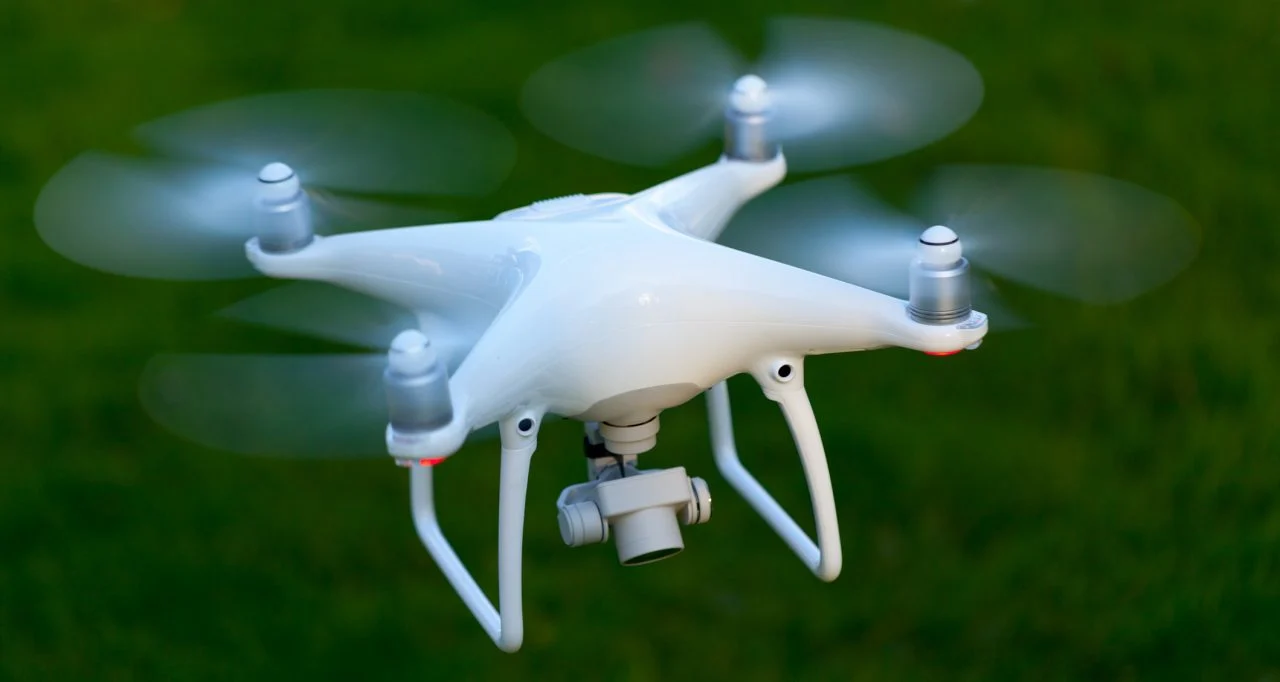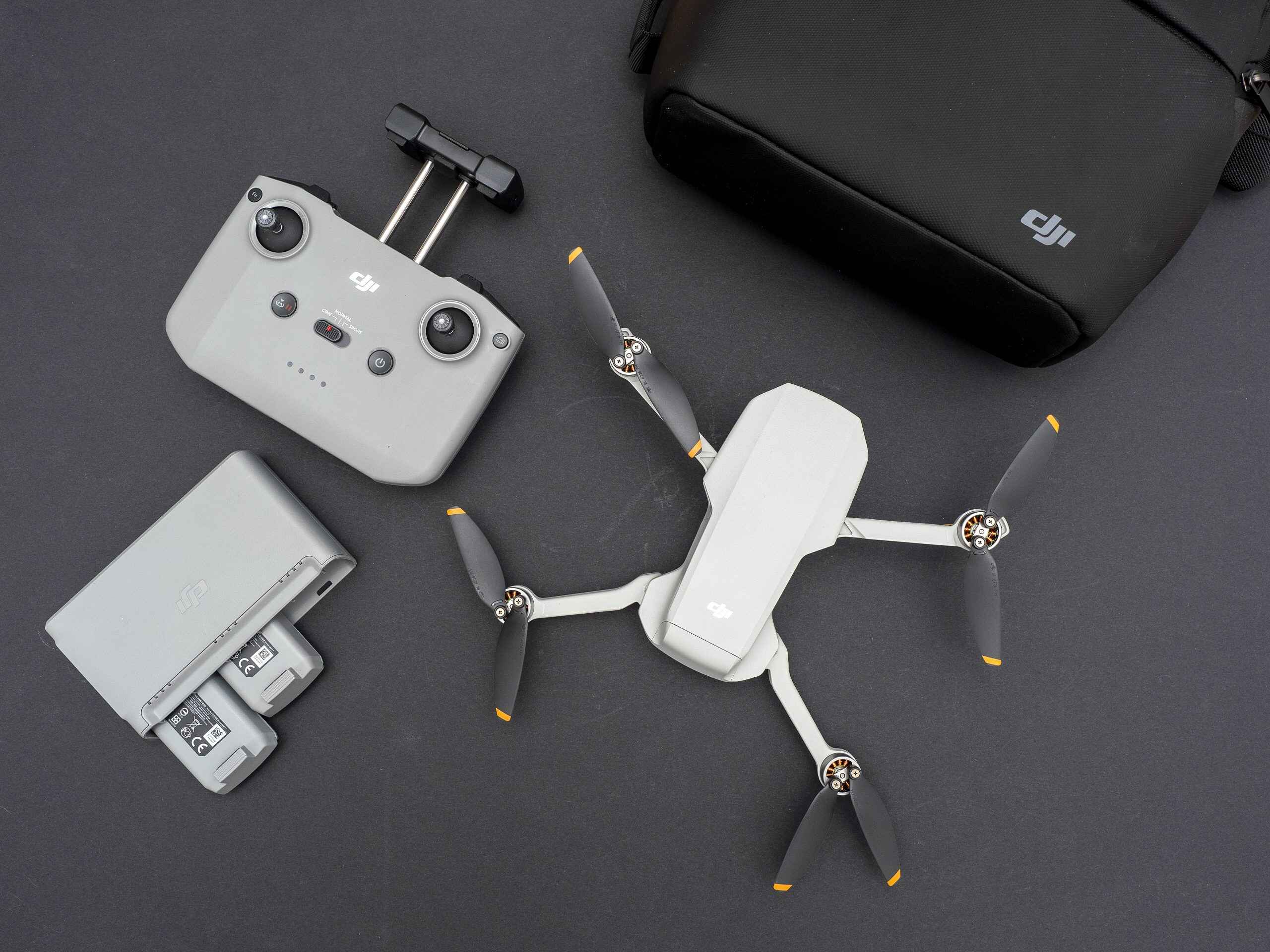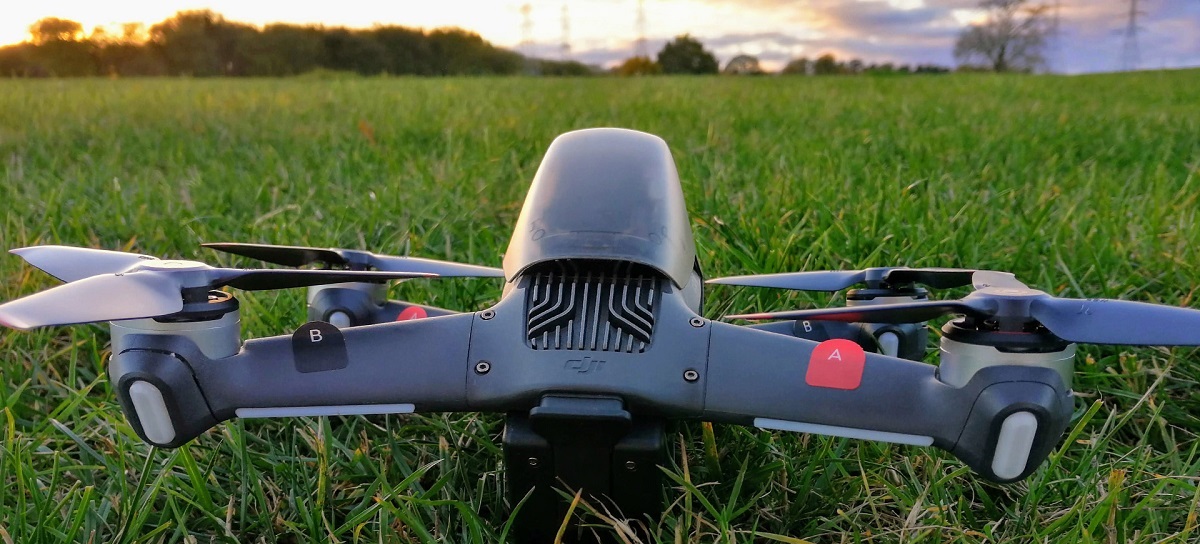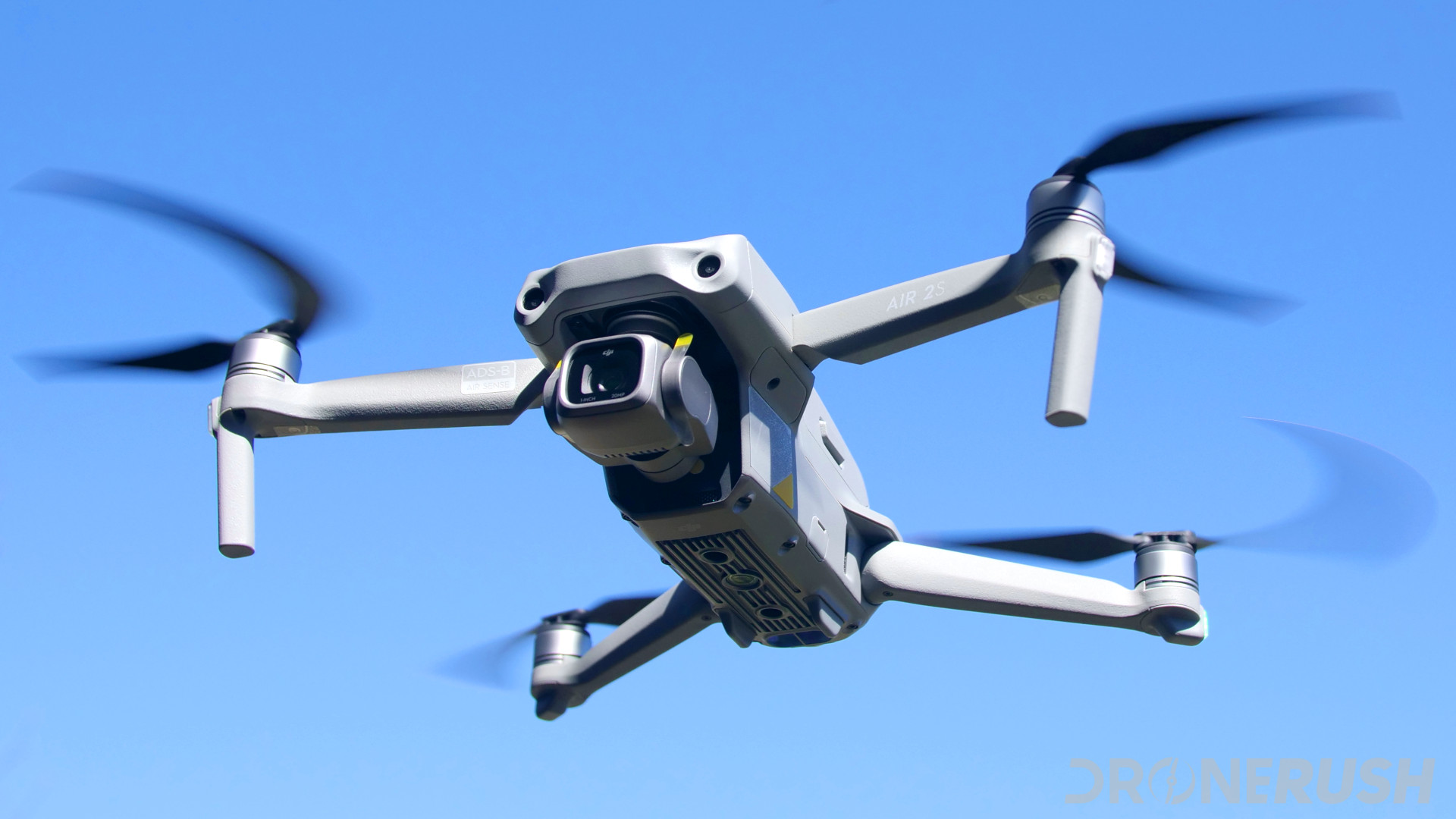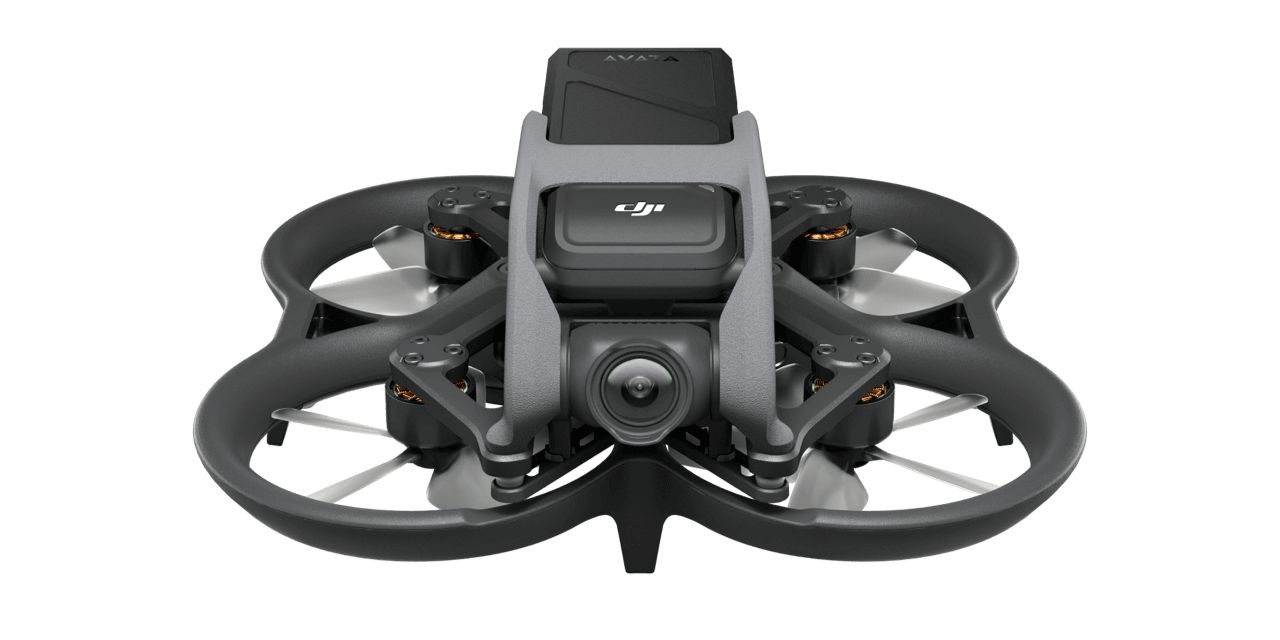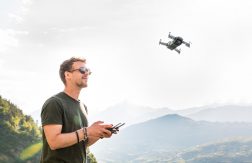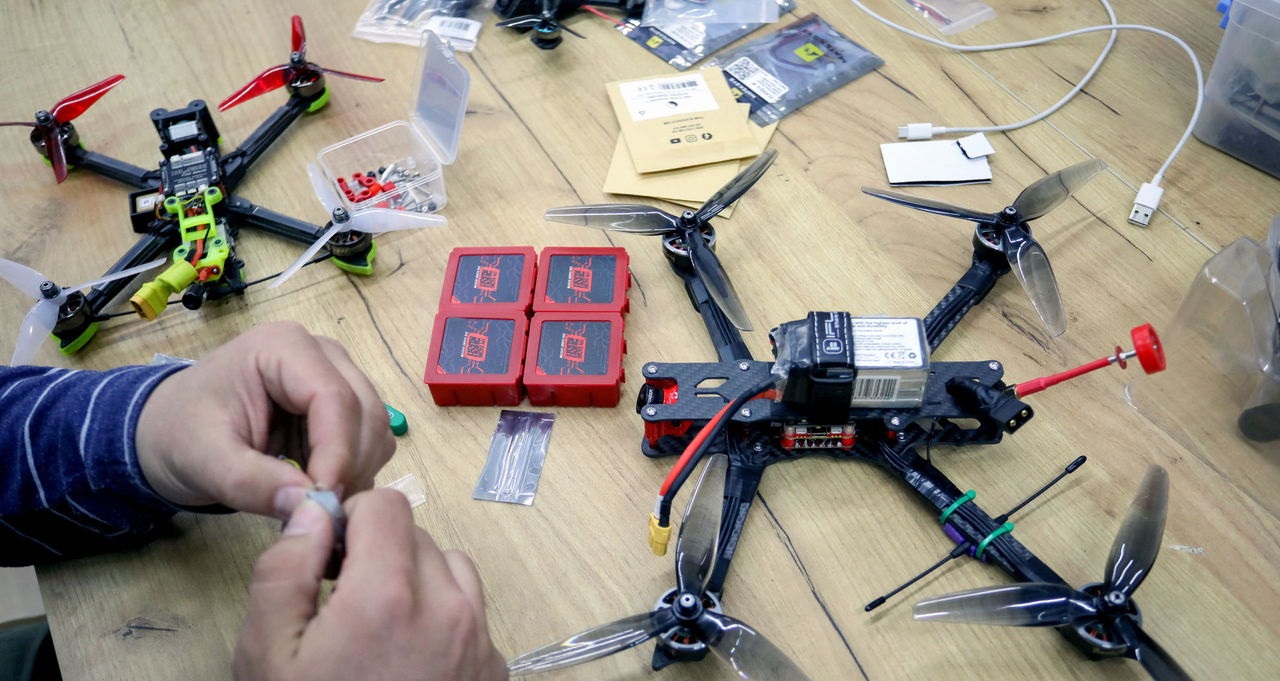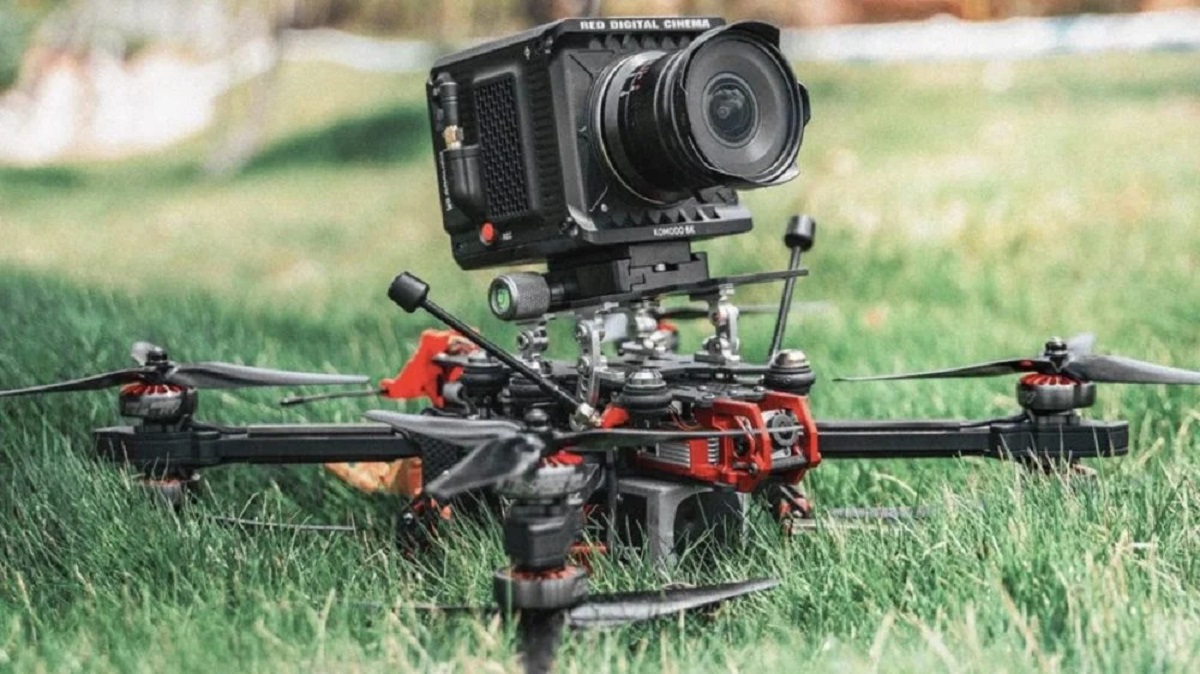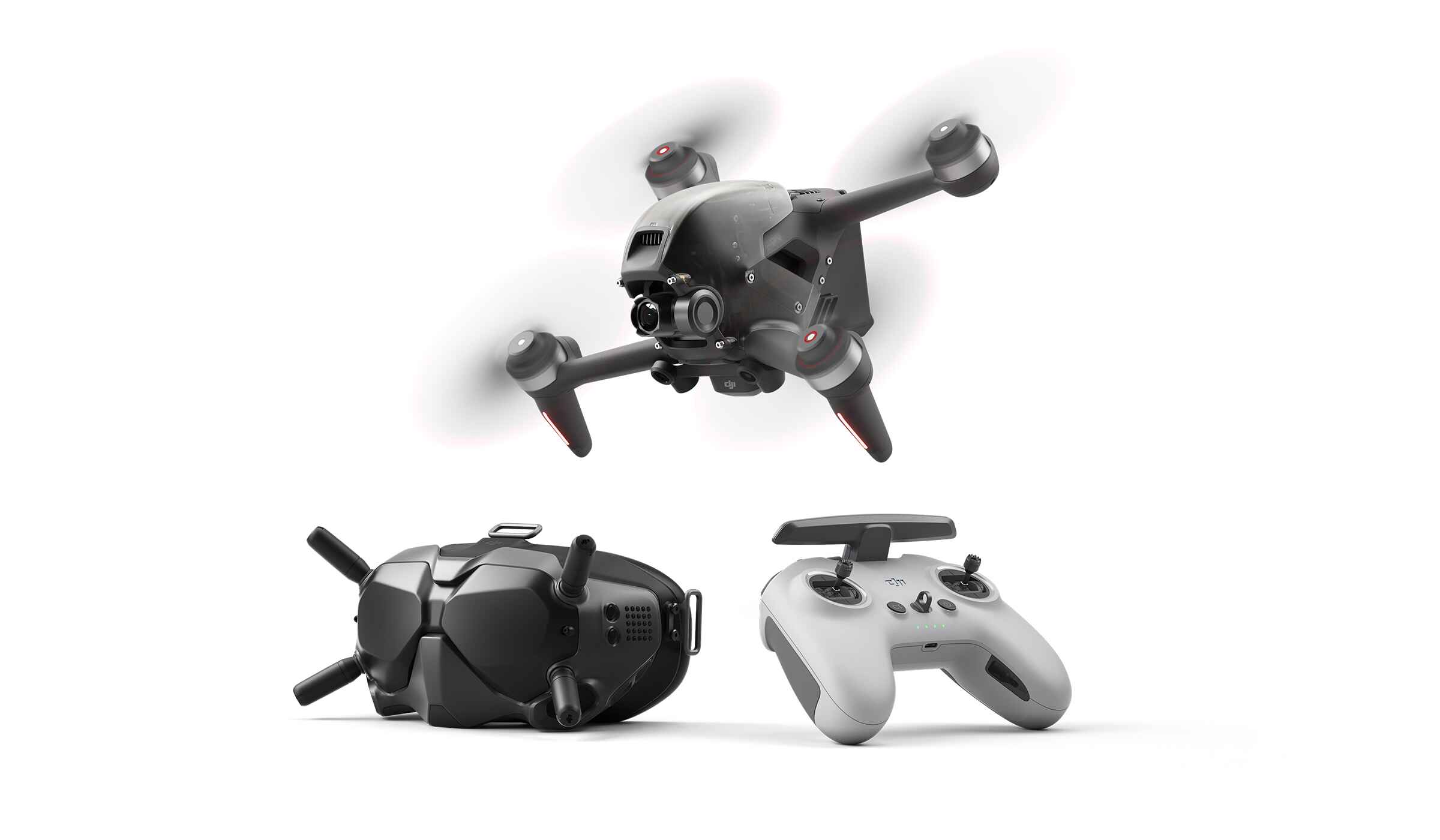Introduction
Drones have become increasingly popular in recent years, dominating the skies as versatile tools for photography, videography, delivery services, and even racing. One of the key factors that enthusiasts and professionals consider when purchasing a drone is its speed. The speed of a drone can vary significantly based on various factors, including its design, size, and purpose. In this article, we will explore the factors that impact drone speed, the different types of drones and their speed capabilities, the speed limits and regulations for flying drones, and the factors to consider when choosing a drone for speed.
When it comes to drone speed, several factors come into play. The design and build of the drone itself play a crucial role. Drones with sleek aerodynamic designs and powerful motors tend to achieve higher speeds compared to bulkier models. The size of the drone also affects its speed, with smaller drones generally being faster and more nimble. Additionally, the weight of the drone and its payload can impact its speed, as heavier drones may experience limitations in terms of acceleration and maneuverability.
The type of propulsion system used in a drone can have a significant impact on its speed as well. Drones can utilize various types of propulsion systems, including propellers, rotors, or jet engines. Each of these systems has its advantages and limitations when it comes to speed. For example, drones equipped with propellers are commonly used for aerial photography and videography, while racing drones often employ rotors for enhanced speed and agility.
Moreover, the power source and battery life are crucial factors that can affect a drone’s speed. Drones powered by high-capacity lithium polymer (LiPo) batteries tend to have longer flight times and can maintain higher speeds for extended periods. On the other hand, drones with lower battery capacities may experience decreased speed and performance as their batteries drain. It is important to consider these factors when selecting a drone that meets your specific speed requirements.
Before flying a drone at its maximum speed, it’s essential to be aware of the speed limits and regulations set by regulatory bodies. Different countries and regions often have specific regulations in place to ensure the safe operation of drones. These regulations may include restrictions on flying speeds, altitude limitations, and designated areas for drone flights. It’s important to familiarize yourself with these rules and regulations to ensure you stay within legal limits and operate your drone safely and responsibly.
Factors that Impact Drone Speed
When it comes to the speed of a drone, several factors come into play, determining how fast or slow it can go. Understanding these factors can help you choose the right drone that meets your speed requirements. Here are some key factors that impact drone speed:
1. Design and Build: The design and build of a drone play a crucial role in its speed capabilities. Drones with sleek and aerodynamic designs, such as quadcopters, are known to achieve higher speeds compared to bulkier models. The streamlined design helps minimize drag, enabling faster and more efficient flight.
2. Size: The size of the drone also affects its speed. Generally, smaller drones tend to be faster and more nimble compared to larger ones. Their reduced weight and compact design allow them to accelerate quickly and achieve higher speeds. However, larger drones may offer better stability and payload capacity.
3. Weight: The weight of the drone, including its battery and payload, can have a significant impact on its speed. Heavier drones require more power to accelerate and maintain higher speeds. Therefore, lightweight drones often have an advantage in terms of speed and agility.
4. Propulsion System: The type of propulsion system used in a drone can greatly impact its speed. Drones typically utilize propellers, rotors, or jet engines for propulsion. Each of these systems has its advantages and limitations. Racing drones, for instance, usually feature rotors that generate high thrust, enabling them to reach impressive speeds. On the other hand, drones used for aerial photography often employ propellers that provide stability and efficiency.
5. Power Source and Battery Life: The power source and battery life are crucial factors that affect a drone’s speed. Drones powered by high-capacity lithium polymer (LiPo) batteries tend to have longer flight times and can maintain higher speeds for extended periods. It’s important to consider the battery capacity and flight time when looking for a drone that can sustain the desired speed.
6. Flight Mode: Some drones offer different flight modes, such as sport mode, which prioritize speed and agility. These modes allow the drone to fly at higher speeds by adjusting the motor power and flight controls. It’s important to check if the drone you’re considering has a sport mode or similar feature if you’re specifically looking for speed.
7. Environmental Factors: Environmental conditions, such as wind speed and direction, can impact a drone’s speed and stability. Strong winds can significantly affect the speed and maneuverability of a drone. It’s important to consider the weather conditions and choose an appropriate flying location to ensure optimal speed and control.
By considering these factors, you can make an informed decision when selecting a drone that aligns with your speed requirements. Whether you’re a racing enthusiast or focused on capturing fast-paced aerial footage, understanding these factors will help you find a drone that delivers the speed and performance you desire.
Types of Drones and Their Speed Capabilities
Drones come in various types, each designed for specific purposes and with different speed capabilities. Understanding the different types of drones and their speed capabilities can help you choose the right drone for your specific needs. Here are some common types of drones and their respective speed capabilities:
1. Aerial Photography Drones: Aerial photography drones are designed for capturing high-quality photos and videos from the sky. These drones typically prioritize stability and maneuverability over sheer speed. While they may not be the fastest drones on the market, they are still capable of reaching moderate speeds ranging from 15 to 35 miles per hour (24 to 56 kilometers per hour). These speeds are sufficient for capturing stunning aerial footage and ensuring a smooth flight experience.
2. Racing Drones: Racing drones are purpose-built for competitive racing events, where speed and agility are paramount. These drones can reach incredibly high speeds, often surpassing 60 miles per hour (96 kilometers per hour) in just a few seconds. With their lightweight frames, powerful motors, and aerodynamic designs, racing drones are optimized for speed, allowing pilots to perform thrilling maneuvers and compete in fast-paced races.
3. FPV Freestyle Drones: FPV freestyle drones are similar to racing drones in terms of speed and agility. However, their focus is on capturing dynamic and cinematic aerial footage rather than competitive racing. These drones are equipped with high-definition cameras and video transmitters that provide real-time first-person view (FPV) to the pilot, allowing for immersive and exciting flight experiences. With their powerful motors and acrobatic capabilities, FPV freestyle drones can achieve similar speeds as racing drones, enabling impressive aerial maneuvers and capturing breathtaking footage.
4. Consumer Camera Drones: Consumer camera drones are designed for recreational use and capturing aerial photos and videos. These drones prioritize ease of use and stability, making them suitable for beginners and enthusiasts alike. While they may not be as fast as racing or FPV drones, consumer camera drones can still reach speeds between 20 to 40 miles per hour (32 to 64 kilometers per hour), depending on the specific model. These speeds allow for smooth and controlled flights while ensuring high-quality aerial imagery.
5. Toy Drones: Toy drones are typically designed for children and beginners, focusing more on affordability and ease of use rather than speed. These drones have limited speed capabilities, generally ranging from 5 to 10 miles per hour (8 to 16 kilometers per hour). While they may not offer the same level of speed and performance as other types of drones, toy drones provide a fun and accessible entry point into the world of remote-controlled flight.
When selecting a drone, it’s important to consider the type that best suits your needs and desired speed capabilities. Whether you’re looking to capture stunning aerial footage, compete in racing events, or simply enjoy recreational flying, understanding the different types of drones and their respective speed capabilities will help you make an informed decision and find the perfect drone for your requirements.
Speed Limits and Regulations for Flying Drones
When it comes to flying drones, it’s vital to understand and adhere to the speed limits and regulations set by regulatory bodies. These rules are in place to ensure the safe operation of drones and prevent any potential risks or hazards. Here are some key considerations regarding speed limits and regulations for flying drones:
1. Legal Speed Limits: Different countries and regions have specific speed limits for drones. In the United States, for example, the Federal Aviation Administration (FAA) states that drones must not fly faster than 100 miles per hour (160 kilometers per hour) or exceed the manufacturer’s recommended speed limits. It’s crucial to familiarize yourself with the speed limits specified by the regulatory authority governing drone operations in your area.
2. Altitude Restrictions: In addition to speed limits, drone regulations often include altitude restrictions. These restrictions define the maximum height at which a drone can fly, ensuring that it remains within a safe range and avoids potential conflicts with manned aircraft. Violating altitude restrictions can result in fines, penalties, or even legal consequences. Always check and abide by the altitude limitations specified in the applicable regulations.
3. Flying Zones and No-Fly Zones: Many areas have designated zones where drones are prohibited from flying or have limited access due to safety or privacy concerns. These areas may include airports, restricted military facilities, government buildings, and densely populated areas. It’s crucial to consult local regulations, maps, and drone apps to identify any restricted zones or no-fly areas in your vicinity. Operating a drone in restricted zones can lead to severe penalties, as well as pose risks to aviation and public safety.
4. Visual Line of Sight (VLOS) Requirements: Most countries require drone pilots to maintain visual line of sight (VLOS) with their drones during flight. This means keeping the drone within the pilot’s direct sight at all times. Flying a drone beyond the visual line of sight is often prohibited, as it can pose hazards to other aircraft, objects, or people. Ensure that you follow VLOS requirements and have a clear visual on your drone while flying to maintain control and avoid potential accidents.
5. Special Permissions and Licenses: Certain jurisdictions may have special permissions, licenses, or certifications required for operating drones at higher speeds or engaging in specific activities, such as commercial operations or racing events. Always check the local regulations and consult the appropriate authorities to ensure compliance with any special requirements for your intended drone operations.
It’s important for drone operators to thoroughly familiarize themselves with the speed limits and regulations specific to their location. This knowledge ensures the safe and responsible operation of drones while respecting the privacy and security of individuals and property. Ignorance of the rules and regulations is not an excuse, as the consequences of non-compliance can be severe. By staying informed and adhering to the speed limits and regulations, you can enjoy flying your drone within the legal framework and contribute to the responsible growth of the drone industry.
Factors to Consider When Choosing a Drone for Speed
When looking to purchase a drone specifically for speed, there are several important factors to consider. These factors will help you find a drone that can meet your need for high-speed flights and exhilarating aerial experiences. Here are key considerations when choosing a drone for speed:
1. Design and Build: Look for drones with sleek and aerodynamic designs. These streamlined shapes offer reduced wind resistance, allowing the drone to cut through the air more efficiently. Drones with lightweight frames and materials also tend to be faster and more agile in flight.
2. Motor Power: The power of the drone’s motors plays a significant role in its speed capabilities. Choose a drone with high-performance brushless motors, as they provide stronger and more precise thrust, allowing the drone to achieve faster speeds and quicker acceleration.
3. Propulsion System: Consider the type of propulsion system used by the drone. Racing drones often employ quadcopter or hexacopter configurations with multiple rotors for enhanced speed and maneuverability. On the other hand, drones used for aerial photography may utilize propellers for stability and efficiency.
4. Battery Life: Longer flight times are desirable when it comes to speed. Look for a drone that offers sufficient battery life to support high-speed flights. Drones equipped with high-capacity lithium polymer (LiPo) batteries are typically capable of delivering the necessary power for sustained speed performance.
5. Flight Modes: Check if the drone offers specialized flight modes for speed, such as a sport mode. These modes adjust the drone’s performance parameters to prioritize speed and agility. Having a dedicated speed mode can maximize the drone’s capabilities and allow for high-speed flights.
6. Controller: Consider the controller’s capabilities and responsiveness. Look for a controller that offers precise control inputs and low-latency communication with the drone. A well-designed controller can enhance the drone’s speed and maneuverability, allowing for more thrilling flights.
7. Range and Connectivity: Ensure that the drone has a reliable and long-range connectivity system, such as a strong radio transmitter or digital transmission technology like DJI’s OcuSync or FPV (First Person View) systems. This ensures a stable and lag-free connection between the drone and the controller, allowing for high-speed flights without interruption.
8. Compatibility with Accessories: Consider whether the drone is compatible with accessories like propeller guards or additional speed-boosting devices. These accessories can optimize the drone’s performance for speed and provide added safety during high-speed flights.
By considering these factors, you can find a drone that suits your need for speed and provides an exhilarating flying experience. However, it’s important to note that high-speed flying requires skill and experience. Practice in open and safe areas before pushing the drone to its limits, and always follow local regulations and guidelines to ensure safe and responsible drone operations.
Fastest Drones on the Market
For drone enthusiasts seeking the thrill of high-speed flights and adrenaline-pumping aerial maneuvers, there are several models on the market known for their impressive speed capabilities. These cutting-edge drones are designed with advanced technologies and powerful components to maximize performance. Here are some of the fastest drones currently available:
1. DJI FPV: The DJI FPV is one of the fastest drones designed for immersive first-person view (FPV) flying. With a top speed of up to 87 miles per hour (140 kilometers per hour) in manual mode, it offers a thrilling flying experience. Equipped with a high-definition FPV camera, advanced flight controller, and powerful motors, the DJI FPV is a popular choice among FPV enthusiasts and drone racing pilots.
2. Autel Robotics EVO II: Known for its impressive flight performance, the Autel Robotics EVO II can reach speeds of up to 45 miles per hour (72 kilometers per hour). It features a advanced aerodynamic design and powerful motors, allowing for quick acceleration and agile maneuvers. The EVO II also offers an impressive flight time of up to 40 minutes, extending the high-speed flying experience.
3. Yuneec Typhoon H Pro: The Yuneec Typhoon H Pro is a versatile hexacopter that combines speed, stability, and functionality. With a maximum speed of 43.5 miles per hour (70 kilometers per hour), it offers exciting and fast-paced flights. The drone features a 360-degree rotating gimbal camera, obstacle avoidance sensors, and intelligent flight modes, making it a popular choice for both aerial photography and speed enthusiasts.
4. Walkera F210 Professional Racer: As its name suggests, the Walkera F210 Professional Racer is designed specifically for racing purposes. With top speeds of up to 50 miles per hour (80 kilometers per hour), it offers adrenaline-fueled race experiences. Equipped with high-performance brushless motors, a durable carbon fiber frame, and responsive flight controls, the Walkera F210 Professional Racer is a favored option among drone racing enthusiasts.
5. PowerVision PowerEgg X Explorer: Offering a unique design and versatility, the PowerVision PowerEgg X Explorer is capable of reaching speeds up to 42 miles per hour (68 kilometers per hour). This foldable drone combines a sleek and compact design with powerful motors and advanced flight features. It also boasts a waterproof and floatable design, making it suitable for both land and water high-speed adventures.
These are just a few examples of the fastest drones on the market. It’s important to note that speed capabilities can vary depending on conditions, flight modes, and pilot skills. When operating any high-speed drone, it’s crucial to follow safety guidelines, fly in appropriate locations, and be aware of local regulations to ensure a responsible and enjoyable flying experience.
Tips for Maximizing Drone Speed
If you want to push your drone to its maximum speed capabilities and experience exhilarating high-speed flights, there are several tips you can follow to maximize its speed and performance. Here are some helpful tips for getting the most out of your drone’s speed:
1. Choose a Lightweight Drone: Opt for a lightweight drone with a streamlined design. The lighter the drone, the faster it can accelerate and the higher top speed it can achieve. Look for drones made from materials such as carbon fiber or lightweight plastics to reduce weight without sacrificing durability or stability.
2. Trim Down Extra Weight: Minimize the additional weight your drone carries. Remove any unnecessary accessories or payloads that can reduce speed and agility. This includes extra propeller guards, landing gear, or additional camera equipment if speed is your primary focus.
3. Upgrade to High-Performance Motors: Consider upgrading to high-performance brushless motors if your drone allows it. These motors provide more power, torque, and speed compared to standard motors, allowing your drone to achieve faster speeds and better overall performance.
4. Optimize Propellers: Choose propellers designed for speed and performance. Look for propellers with a higher pitch value, as they generate more thrust. Just ensure that the motors and drone can handle the increased load and speed. Regularly check and balance your propellers to maintain optimal performance.
5. Fly in Ideal Conditions: Maximize speed by flying in ideal weather conditions. Choose a day with minimal wind to reduce resistance and interference, allowing your drone to achieve its maximum speed. Avoid flying in extreme heat or cold, as these conditions can affect battery performance and overall drone operation.
6. Use Sport or High-Speed Mode: Many drones offer dedicated sport or high-speed modes. These modes adjust the flight parameters and motor output to prioritize speed and agility. Activate the appropriate mode to access the full potential of your drone’s speed capabilities.
7. Optimize Flight Control Settings: Fine-tune your drone’s flight control settings to achieve maximum speed. Adjust control sensitivity, responsiveness, and acceleration settings based on your flying skills and the flight environment. Experiment with different settings to find the optimal balance of speed and stability.
8. Maintain a Smooth Flight Path: Fly your drone in a smooth and controlled manner, avoiding sudden jerky movements or erratic flight patterns. Sharp or sudden maneuvers can disrupt the drone’s speed and stability, affecting its overall performance and potentially causing flight issues.
Remember to always prioritize safety and adhere to local laws and regulations when flying at high speeds. Choose open areas with minimal obstacles, maintain visual line of sight with your drone, and avoid crowded or congested spaces. By following these tips and considering your drone’s technical capabilities, you can maximize its speed potential and enjoy thrilling high-speed flights.
Conclusion
Drones have revolutionized the way we explore and interact with the world from above. When it comes to speed, drones offer exciting opportunities for thrilling flights and adrenaline-pumping experiences. Understanding the factors that impact drone speed, the types of drones available, and the regulations surrounding drone speed is crucial for both enthusiasts and professionals.
Factors such as design, size, weight, propulsion system, battery life, and flight modes all play intricate roles in determining a drone’s speed capabilities. Racing drones, with their sleek and lightweight designs, powerful motors, and advanced flight controllers, are built for speed and agility. Aerial photography drones, on the other hand, prioritize stability and performance for capturing stunning imagery from the sky.
It is important to familiarize yourself with the speed restrictions and regulations set by regulatory bodies in your country or region. These regulations ensure safe drone operations and prevent potential hazards. Adhering to speed limits, altitude restrictions, and flying in designated zones helps protect manned aircraft, people, and property while maintaining a responsible and respectful presence in the airspace.
When choosing a drone primarily for speed, consider factors such as design, motor power, propulsion systems, battery life, flight modes, controller capabilities, range, and compatibility with accessories. These factors will help you find a drone that best suits your need for high-speed flights and delivers the thrilling experience you desire.
Maximizing drone speed can be achieved by selecting a lightweight and streamlined drone, upgrading to high-performance motors, using optimized propellers, flying in ideal weather conditions, and utilizing sport or high-speed modes. It’s important to maintain control, follow optimal flight paths, and prioritize safety when operating drones at high speeds.
In conclusion, the world of drones offers a wide range of options for speed enthusiasts. Whether you’re looking for a racing drone to compete in thrilling races, an FPV freestyle drone for aerobatic adventures, or a consumer camera drone for recreational high-speed flights, understanding the factors, regulations, and tips discussed in this article will help you make informed decisions and explore the skies with speed and excitement.







